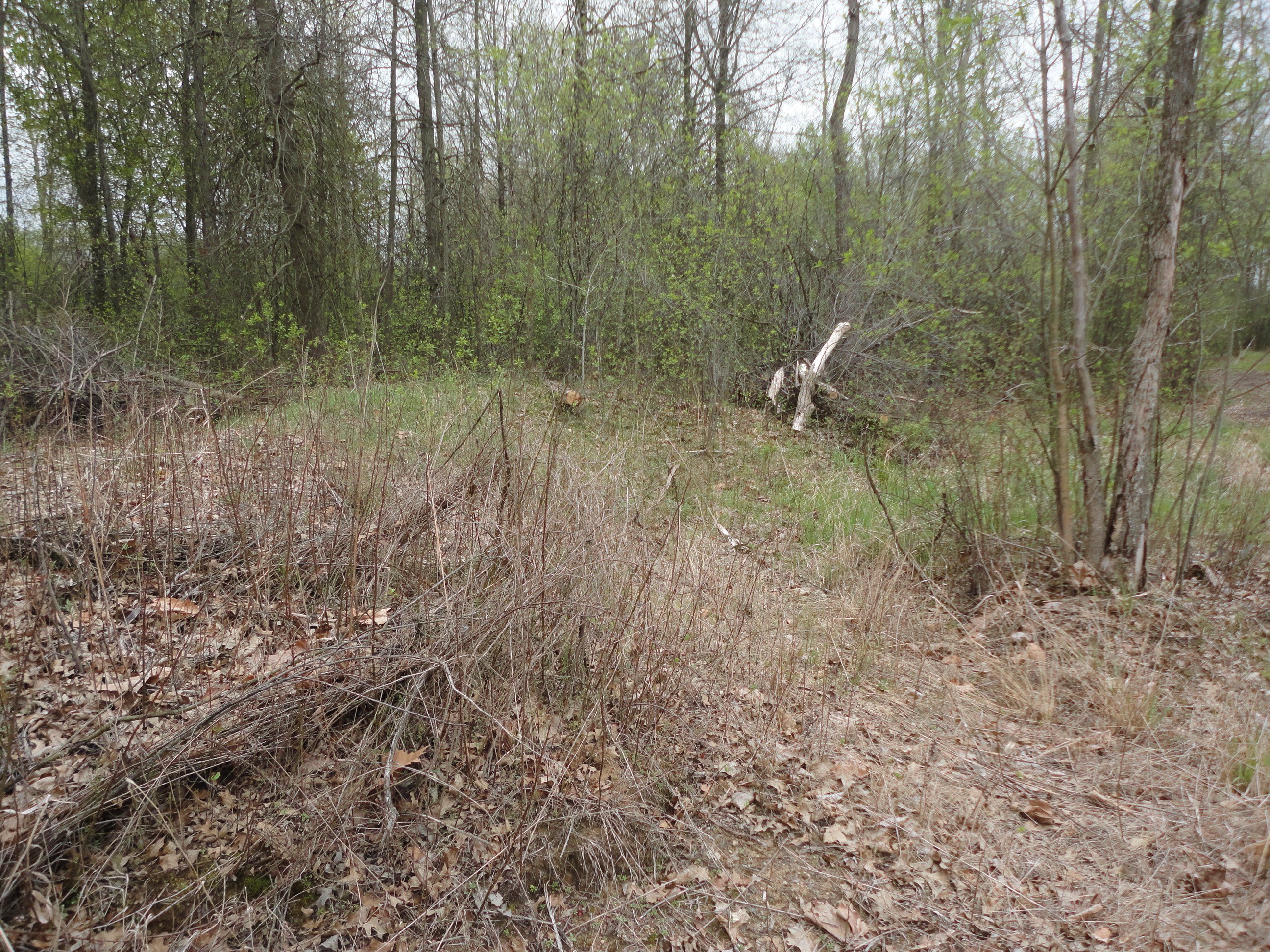Common name: Lone Star tick
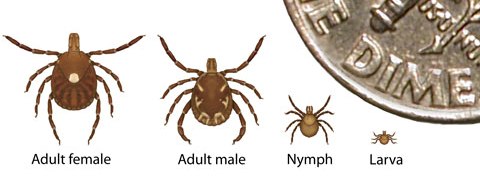
Amblyomma americanum. Graphic: Centers for Disease Control and Prevention.
- Geographic Distribution
Lone Star ticks are widely distributed in the eastern United States, but more common in the South. These ticks are most often encountered in brushy areas. Click here to see the geographic distribution of ticks that bite humans in the United States.
To see where Lone Star ticks have been detected, visit the Indiana Tick-borne Disease Surveillance dashboard and select "Ehrlichiosis" from the disease dropdown menu.
Figure 2: Lone Star tick habitat
Photo: Indiana Department of Health
- Life Cycle
All life stages of Lone Star ticks can feed on humans. The Lone Star tick life cycle consists of four stages (egg, larva, nymph and adult) and usually takes two years to complete. These ticks are known to be aggressive feeders and will pursue many different species of animals for a blood meal. Most Lone Star tick activity occurs in spring and summer. Understanding seasonal activity, or phenology, of vector species is important to determining seasonality of disease risk.
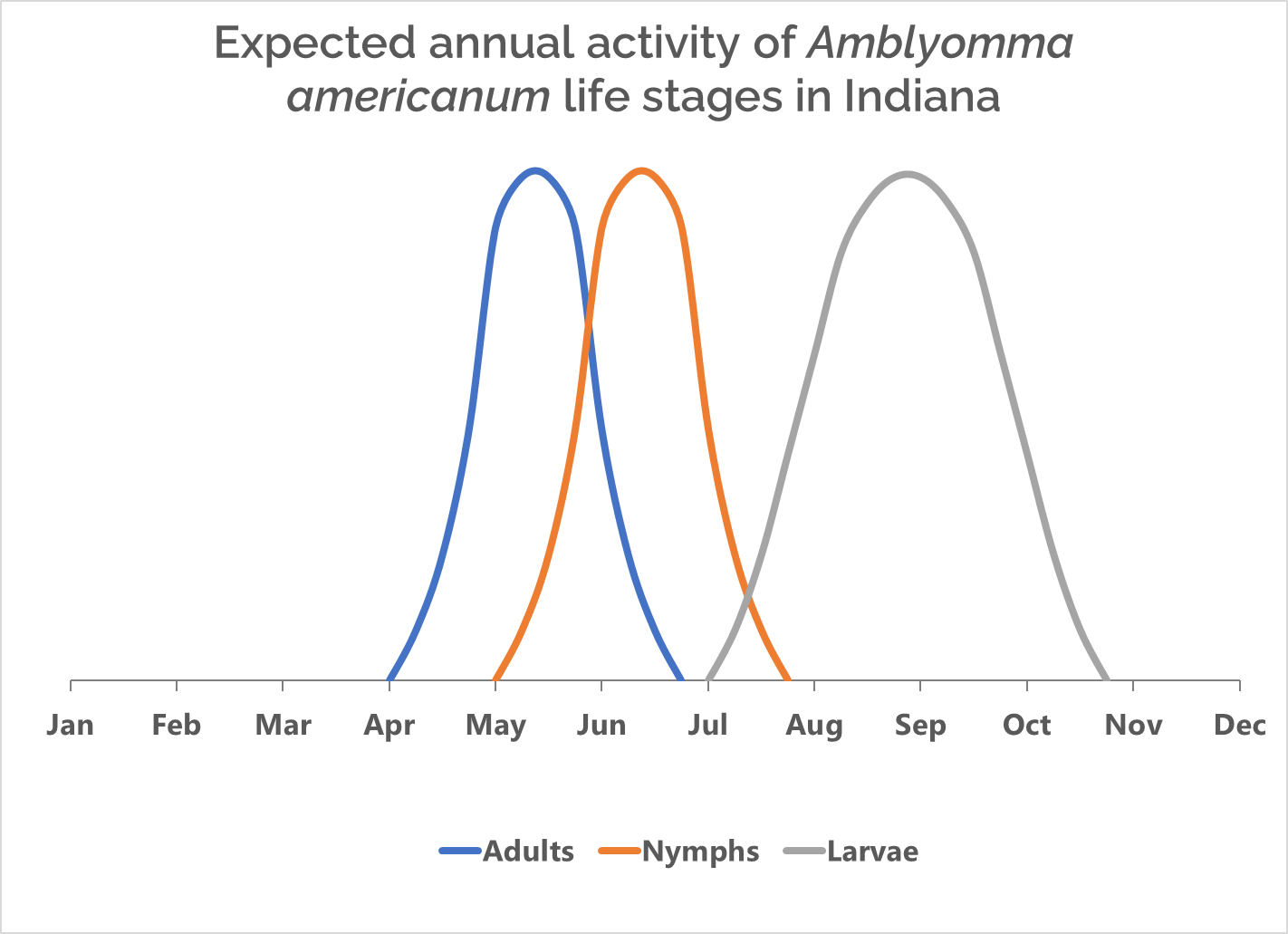
Phenology chart of Amblyomma americanum. Graphic: Indiana Department of Health.
- Commonly Associated Diseases
- Ehrlichiosis
- Tularemia
- Heartland virus
- Bourbon virus
- Southern tick-associated rash illness (STARI)
- Alpha-gal Syndrome is an allergic condition associated with the bite of a Lone Star tick.
- Prevention
The best way to prevent diseases associated with Lone Star ticks is to avoid tick bites. Please see our tick prevention page for more information.
Please visit the Midwest Center of Excellence in Vector-Borne Disease webpage for more information about Lone Star ticks.
- Images
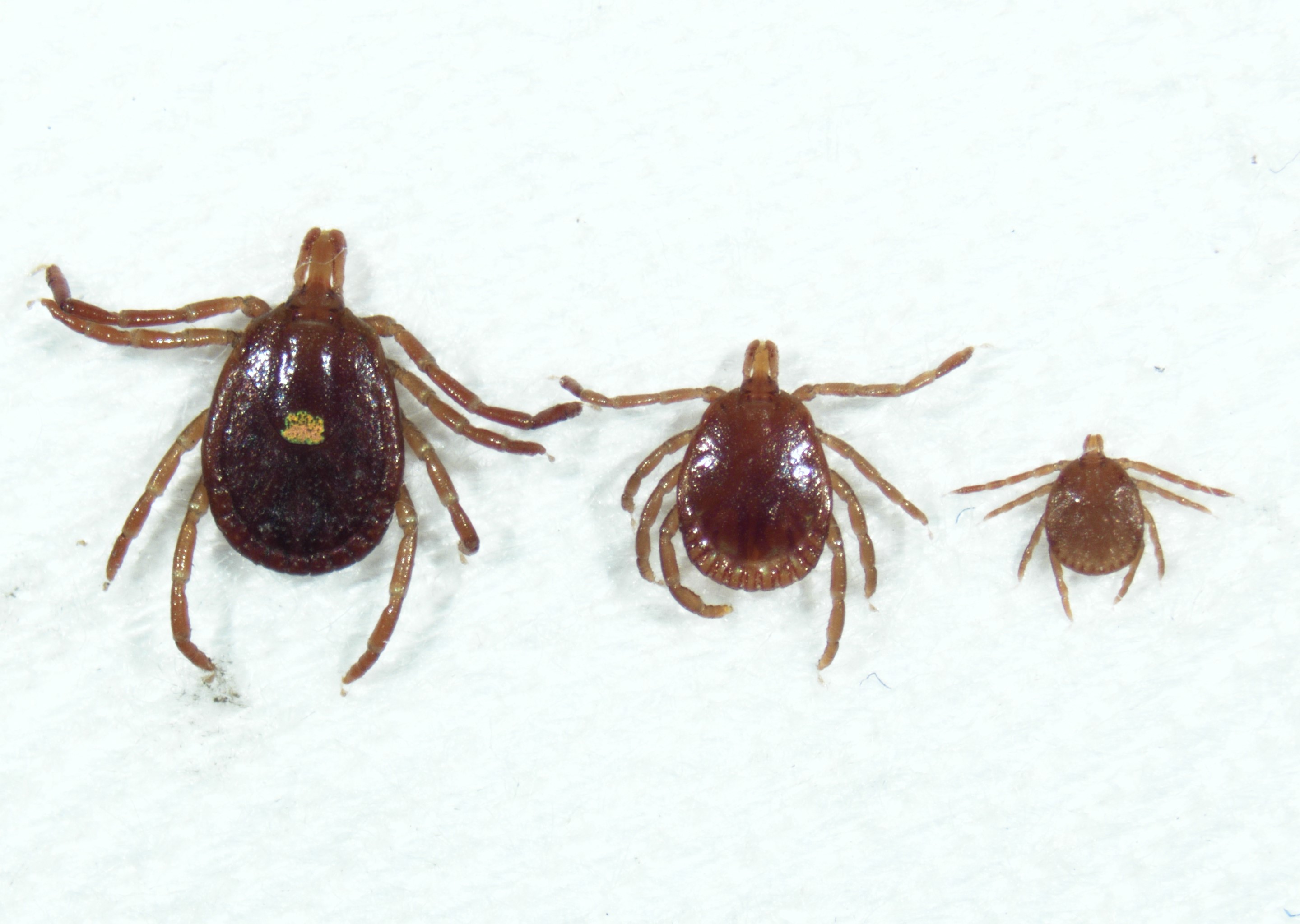
Adult female Lone Star tick (left) with adult male (center) and nymph (right). Photo: Indiana Department of Health.
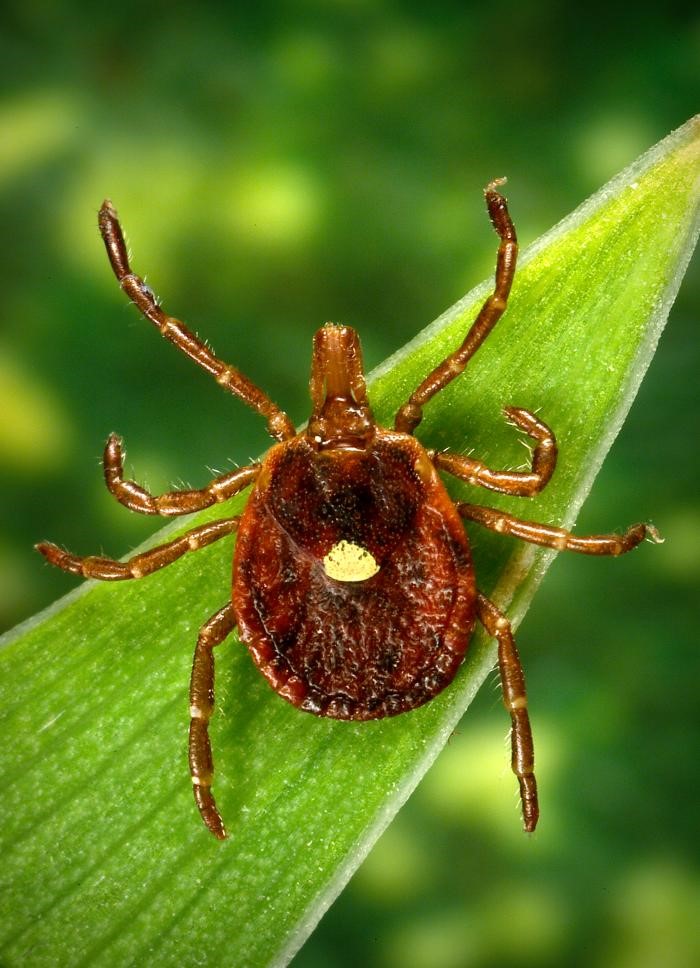
Female Lone Star tick (Amblyomma americanum). Photo: Centers for Disease Control and Prevention.
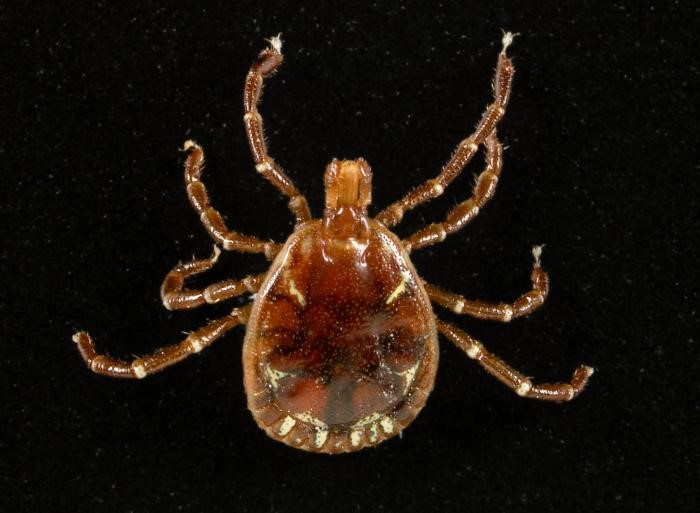
Male Lone Star tick (Amblyomma americanum). Photo: Centers for Disease Control and Prevention.
Page Last Reviewed/Updated: February 2025

